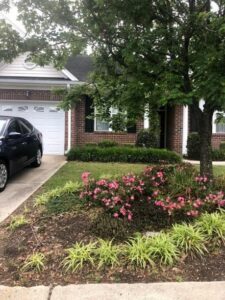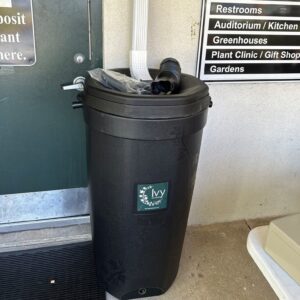Impervious Surface Disconnections – Gutters and Rain Barrels
go.ncsu.edu/readext?1085276
en Español / em Português
El inglés es el idioma de control de esta página. En la medida en que haya algún conflicto entre la traducción al inglés y la traducción, el inglés prevalece.
Al hacer clic en el enlace de traducción se activa un servicio de traducción gratuito para convertir la página al español. Al igual que con cualquier traducción por Internet, la conversión no es sensible al contexto y puede que no traduzca el texto en su significado original. NC State Extension no garantiza la exactitud del texto traducido. Por favor, tenga en cuenta que algunas aplicaciones y/o servicios pueden no funcionar como se espera cuando se traducen.
Português
Inglês é o idioma de controle desta página. Na medida que haja algum conflito entre o texto original em Inglês e a tradução, o Inglês prevalece.
Ao clicar no link de tradução, um serviço gratuito de tradução será ativado para converter a página para o Português. Como em qualquer tradução pela internet, a conversão não é sensivel ao contexto e pode não ocorrer a tradução para o significado orginal. O serviço de Extensão da Carolina do Norte (NC State Extension) não garante a exatidão do texto traduzido. Por favor, observe que algumas funções ou serviços podem não funcionar como esperado após a tradução.
English
English is the controlling language of this page. To the extent there is any conflict between the English text and the translation, English controls.
Clicking on the translation link activates a free translation service to convert the page to Spanish. As with any Internet translation, the conversion is not context-sensitive and may not translate the text to its original meaning. NC State Extension does not guarantee the accuracy of the translated text. Please note that some applications and/or services may not function as expected when translated.
Collapse ▲–Written by Stormwater Engineer Amber Ellis
Did you know that one of the most impactful actions property owners can take to improve water quality is to simply disconnect their impervious surfaces? Many times, gutters are directed to flow across driveways and directly into storm drains, connecting one impervious surface to the next. While efficient, this practice can increase stormwater runoff volumes, flow rates, and pollutant loads. The good news is that there’s an alternative – disconnection!
 The simplest strategy is to direct the gutter downspout away from any concrete or asphalt surfaces and onto vegetated ones. Lawns are ideal, but landscaped beds work well too. The key is to make sure that the water moves away from the building and over established vegetation. This redirection disconnects the impervious surface of the rooftop from that of the roadway. This small change can significantly reduce stormwater volumes, helping reduce pollutants entering local waterways. In the sandy soils of southeastern NC, disconnecting impervious surfaces can cut runoff volumes in half!
The simplest strategy is to direct the gutter downspout away from any concrete or asphalt surfaces and onto vegetated ones. Lawns are ideal, but landscaped beds work well too. The key is to make sure that the water moves away from the building and over established vegetation. This redirection disconnects the impervious surface of the rooftop from that of the roadway. This small change can significantly reduce stormwater volumes, helping reduce pollutants entering local waterways. In the sandy soils of southeastern NC, disconnecting impervious surfaces can cut runoff volumes in half!
You can double the disconnection benefits if you direct your gutter to a rainwater harvesting cistern or rain barrel. Rainwater harvesting not only reduces runoff, but it also serves as a free water source for your garden. Because this water is non-potable, it can be used to irrigate flowers and ornamental landscaping, but be sure to avoid any edible gardens. It is also important that each rain barrel is outfitted with an overflow outlet hose. This will allow water to exit the barrel in the event of consecutive rain events or a large storm. This outlet can be directed onto a vegetated area, just as you would your downspouts.

If you’re interested in disconnecting your downspouts at home, the New Hanover County Soil and Water Conservation district sells 50-gallon rain barrels at 50% below retail price. Barrels are $85, and cash or check is accepted. You can find them on the second Thursday of the month from 8:30 a.m. to 4:00 p.m. at the New Hanover County Arboretum and the third Saturday of the month from 8:00 a.m. to 1:00 p.m. at the Wilmington Farmer’s Market at Tidal Creek. All necessary parts are included.
Rainwater harvesting can be implemented in many different capacities, from single-family households to large warehouses. All you need is a cistern that’s the appropriate size. If you’d like an up-close look at a large-scale rainwater harvesting system, you can visit the N.C. Cooperative Extension New Hanover County Center and Arboretum. There, a 2,500-gallon cistern collects rainfall from the building and can be used to water the gardens. Additionally, county extension staff can connect you with resources regarding the installation, operation, and maintenance of your rainwater harvesting system.
Amber Ellis is an Extension Associate for NC State’s Stormwater Engineering Research Group in the Biological and Agricultural Engineering Department, with an office at the Arboretum, 6206 Oleander Drive. You can reach her at adellis3@ncsu.edu for more information on rainwater harvesting, cisterns, stormwater, or water quality.




